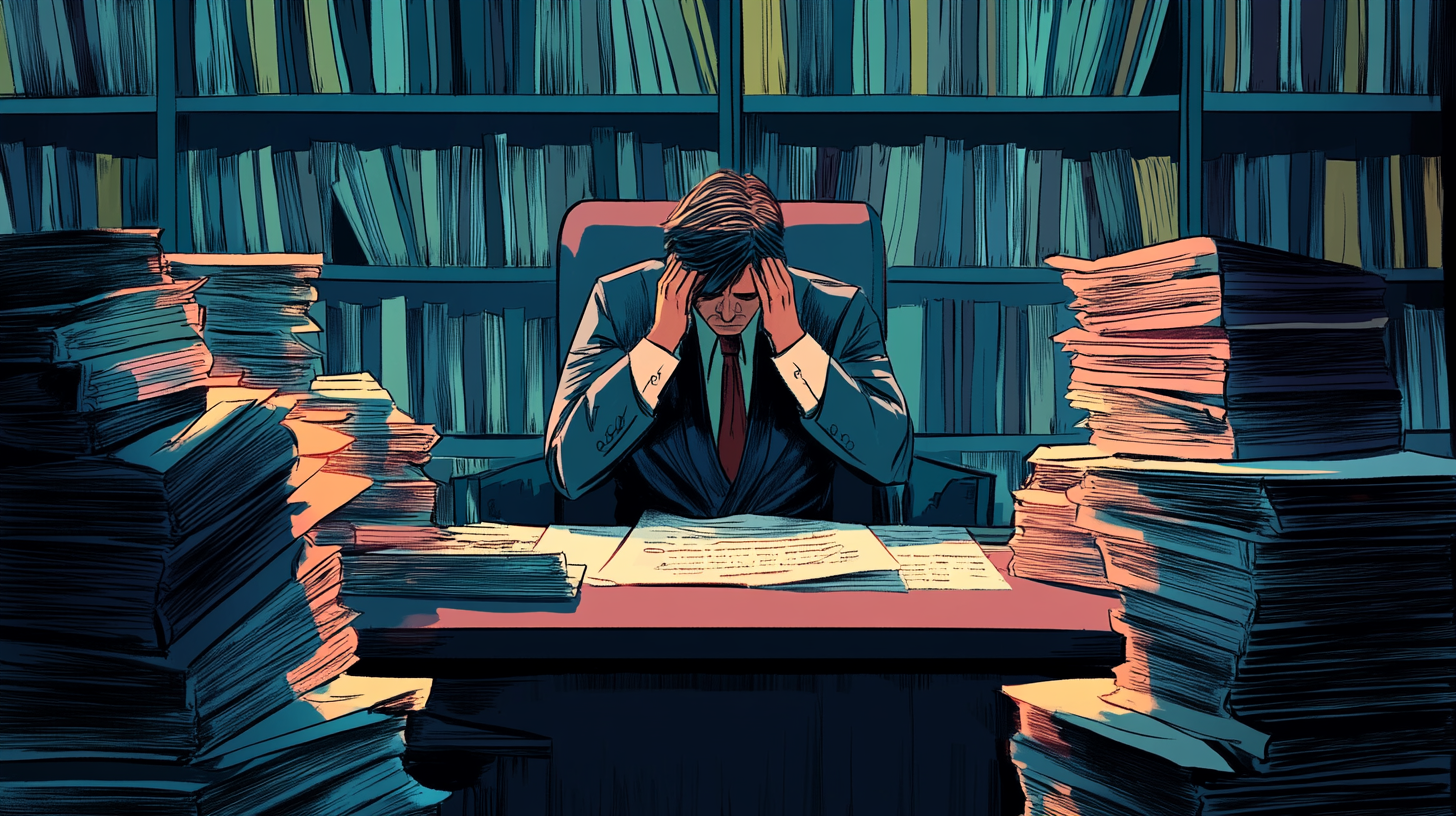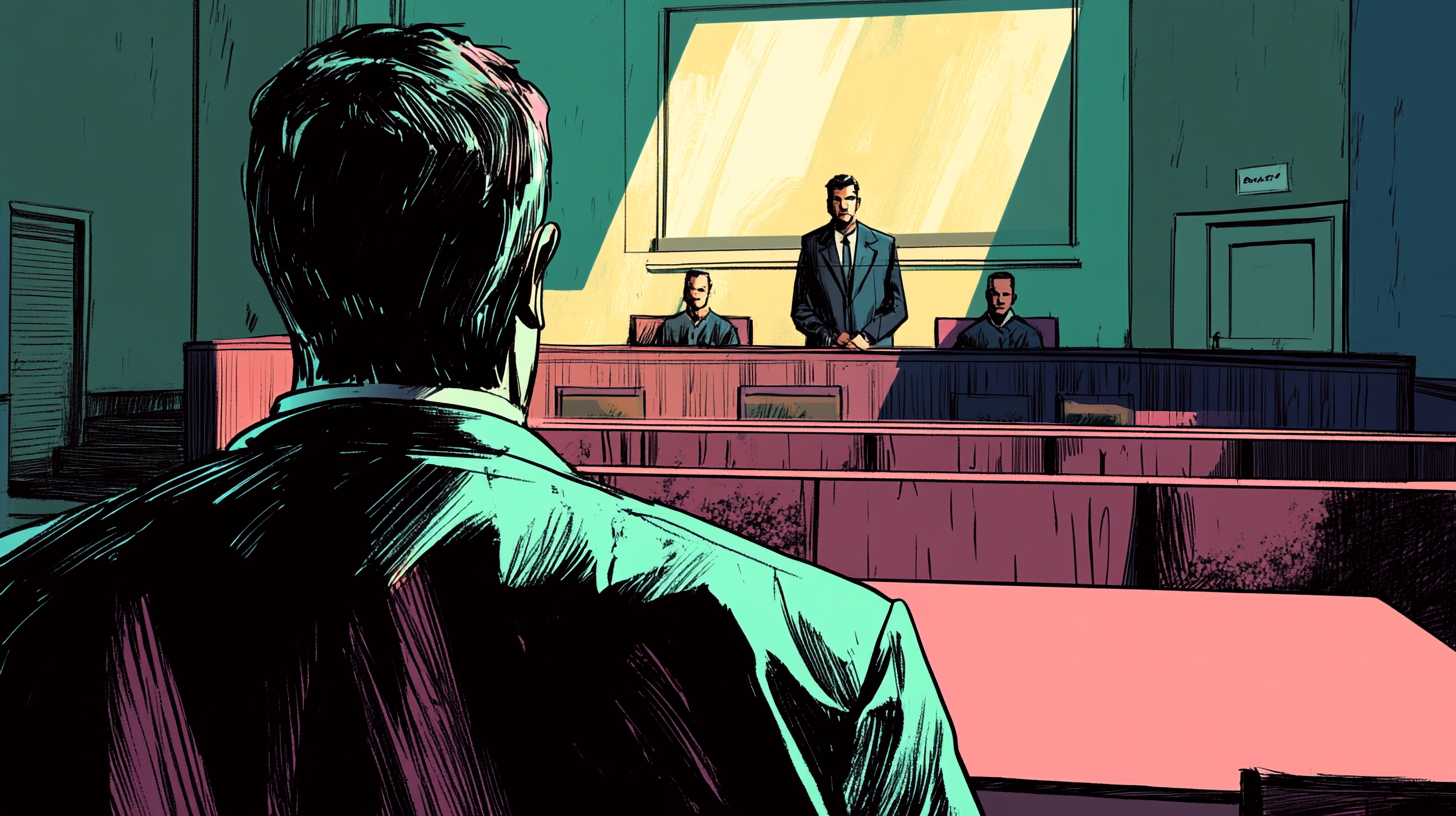Autism on Trial: How a Diagnosis Is Shaping Courtroom Defences 👩⚖️
What happens when a mind doesn’t follow the rules—but is judged by a system that does? Autism is changing how we understand guilt, intent, and justice in the courtroom.


👆👆Listen to today's newsletter by clicking above! 👆👆
We tend to imagine the courtroom as a place of clarity — where facts are laid out like puzzle pieces and justice clicks neatly into place. But what happens when the facts of a case brush up against something murkier — something neurological, invisible, and endlessly misunderstood?
Autism spectrum disorder (ASD), once seen as a clinical diagnosis relegated to schools and support plans, is now increasingly finding its way into legal arguments.
In recent years, courtrooms have become unexpected arenas for a growing debate: how do we fairly judge actions when the mind that performed them works differently from what the law assumes is “normal”? How do we make space — or not — for neurodivergence when the stakes are as high as guilt or innocence?
And now, in America, a court case set to start in August is going to be one of the biggest tests yet of autism as a legal defense. Bryan Kohberger, a 28-year-old criminology PhD student will stand trial for murder. His lawyers say his autism plays a key role in what happened. The prosecution is seeking the death penalty.
This is not a neat story. It is about empathy and fear, justice and ambiguity. It is about the limits of language when trying to explain behaviour that doesn’t follow expected patterns. And it is about whose truth gets believed — the one written in a psychiatric report, or the one a jury sees standing in the dock.
In this week’s Brink, I’m going to explore the rising prevalence of autism diagnoses, the role they’re beginning to play in legal defenses, and what this evolving landscape reveals about the stories we tell — and believe — about the mind, accountability, and fairness.
A Town in Shock: The University of Idaho Killings and the Man Now on Trial 🚨

On a cold November morning in 2022, the town of Moscow, Idaho — known more for its wheat fields and quiet university life than for anything sensational — woke to a story that would grip the nation.
Four University of Idaho students — Madison Mogen, Kaylee Goncalves, Xana Kernodle, and Ethan Chapin — were found fatally stabbed in their off-campus rental home. The crime scene was brutal. The town was stunned. There was no suspect, no motive, no known reason why these young lives were so violently ended in the middle of the night.
The case quickly became national news, not just because of its horror, but because it felt like something out of a true-crime podcast — except this time, it was real, unfolding in real-time. For weeks, police had few leads, and the community lived in fear, locking doors that were once left open and looking over shoulders on campus walks.

But on December 30, 2022, a name emerged: Bryan Kohberger, a 28-year-old criminology PhD student at nearby Washington State University. The irony was impossible to ignore — someone who had studied criminal behavior now standing accused of one of the most chilling crimes in recent memory.
Authorities charged Kohberger with four counts of first-degree murder and one count of felony burglary. The arrest followed a complex digital trail. According to the Moscow Police affidavit, Kohberger's cell phone had pinged near the victims’ home multiple times before the murders. Most damning of all: a leather knife sheath bearing his DNA was found at the scene — beside the bed of two of the victims.
As the case heads to trial in August 2025, new layers of complexity have emerged — not just about the evidence, but about the man himself.
Kohberger’s defense team has submitted an alibi: that he was driving alone the night of the murders. But they’ve also introduced another dimension — one that’s become increasingly relevant in legal settings: mental health. Specifically, autism spectrum disorder.

In pre-trial hearings, his lawyers have argued that Kohberger's diagnosis should be taken into account when evaluating his behavior. They say his flat affect, unusual speech patterns, and lack of eye contact — traits sometimes interpreted as signs of guilt — are more accurately understood as aspects of neurodivergence. “The public may perceive his behavior as cold or detached,” one hearing noted, “but that doesn’t make him a killer.”
This raises uncomfortable but important questions: How should courts interpret a defendant’s social behavior? Can a diagnosis shape not only a person’s defense but the way a jury sees them? These aren’t abstract ideas — they’re now central to a trial that could end in life imprisonment or the death penalty.
To further complicate matters, prosecutors are seeking to limit certain words from being used in the courtroom — terms like “psychopath” and “sociopath” — citing their prejudicial nature. According to reporting from The Guardian, such labels risk tainting the jury before the trial even begins.

And that trial — originally scheduled to take place in Moscow — will now be held in Boise, over 300 miles away, due to the extraordinary media attention and difficulty in securing an impartial jury in the local area.
As the legal process begins to unfold, it’s clear this case is about more than just guilt or innocence. It sits at the intersection of violence, media spectacle, mental health, and the justice system’s attempts to process them all.
Kohberger has pleaded not guilty to all charges. The victims’ families are still searching for closure. And the nation will watch — closely, uneasily — as one of the most haunting crimes in recent memory plays out in a courtroom far from the place where it began. But this isn’t the first time autism has been on trial.
Autism in the dock 👮♂️

In 2000, Kimber Edwards was sentenced to death for hiring someone to kill his ex-wife in Missouri. The case, like so many capital trials, turned on confessions, contradictions, and the emotional weight of grief. His lawyers argued that Edwards was on the autism spectrum — that his diagnosis made him unusually vulnerable to pressure, and therefore more likely to confess to something he may not have fully grasped. The court didn’t buy it. Autism, in this case, wasn’t enough to cast doubt. It wasn’t enough to save him.
But fifteen years later, it was enough to make someone pause.
In 2015, Missouri Governor Jay Nixon commuted Edwards’ sentence to life without parole. The official reasoning was vague, but the autism diagnosis was part of the public conversation. It had taken root in the story — not as an excuse, but as a lens. A reason to reconsider what had once felt decided.
Not everyone gets that reconsideration.

In Georgia, Gregory Lawler made autism central to his clemency appeal. Like Edwards, Lawler had been sentenced to death — this time for killing two police officers. His lawyers didn’t deny the crime. Instead, they pointed to precedent: Atkins v. Virginia, the 2002 Supreme Court decision that ruled it unconstitutional to execute people with intellectual disabilities. The rationale was moral, not medical: that certain conditions limit a person’s capacity for reasoning, judgment, and impulse control — and with it, their moral culpability.
Lawler’s team argued that his autism placed him in that category. That the same neurological wiring that shaped his isolation, his paranoia, and his outbursts also shaped his crime. But unlike Edwards, Lawler didn’t get a commutation. He was executed in 2016.
The UK has had its fair share of cases, too:
- Finlay MacDonald – Skye Murder Trial (2024): In 2024, Finlay MacDonald stood trial at the High Court in Edinburgh for the murder of his brother-in-law and attempted murder of three others. His defence argued that he suffered from autism, PTSD, and a personality disorder, claiming diminished responsibility due to these conditions. The prosecution contended that MacDonald was fully in control of his actions, citing his calculated behaviour during the attacks. The jury was instructed to consider a verdict of culpable homicide if they accepted the diminished responsibility defence.
- Hassan Sentamu – Elianne Andam Case (2023): In 2023, 18-year-old Hassan Sentamu was tried for the fatal stabbing of 15-year-old Elianne Andam in Croydon.Sentamu, diagnosed with autism, claimed diminished responsibility, asserting that his condition impaired his ability to control his actions. He admitted to manslaughter but denied murder and possession of a knife in public.
- Virginia McCullough – Double Murder of Parents (2024): Virginia McCullough was sentenced to life imprisonment for the murders of her parents, whose bodies she concealed for four years. Her defence acknowledged her autism diagnosis but stated it was not an excuse for her actions. The judge concluded that her mental health conditions did not substantially reduce her culpability.
- Damon Smith – London Tube Bomb Plot (2017): In 2017, Damon Smith, a 20-year-old student with autism, was convicted for planting a homemade bomb on a London Underground train. Although the device failed to detonate, he was sentenced to 15 years in a young offender institution.The judge noted that Smith's autism might have contributed to his interest in weapons and difficulty understanding the severity of his actions.
All of these cases throw up difficult questions: What does justice look like when a person’s mind works differently? And what happens when the court sees diagnosis as context — but not as mercy?
When the Mind Is on Trial: How Courts Are Struggling to Make Sense of Mental Illness 👨⚖️

There’s something jarring about the courtroom — that most ritualized, rule-bound space — trying to make sense of something as unpredictable and uncontainable as the human mind. And yet, for centuries, the legal system has been asked to do exactly that.
The question at the center of it all: What happens when someone breaks the law, but their mental state bends the meaning of intent? It’s a question that courts in both the US and UK have been wrestling with — often clumsily — for generations.
The concept isn’t new. In 1843, a Scottish woodturner named Daniel McNaughtan shot and killed the private secretary of the British Prime Minister, believing he was the target of a conspiracy. When he was found not guilty by reason of insanity, the backlash was swift. Public outrage led to the formation of the McNaughtan Rules — a legal standard that still underpins how British courts define criminal insanity today.
The rules are blunt in their simplicity: did the defendant understand what they were doing? And did they know it was wrong?
It’s a binary question applied to a non-binary condition. The law, hungry for clarity, rarely sits comfortably with grey.

Across the Atlantic, the 1981 trial of John Hinckley Jr. brought similar questions into public view. Hinckley, who attempted to assassinate President Ronald Reagan, was also found not guilty by reason of insanity.
The verdict sparked legislative backlash in the US, with states racing to narrow the definition of legal insanity — shifting the burden of proof to the defense, or scrapping the defense entirely in some cases.
These cases shaped public perception. They also embedded a kind of skepticism — the idea that a mental health diagnosis could be wielded like a loophole. And courts, conscious of appearing too soft or too uncertain, often err on the side of punishment.
But as diagnoses rise and our language for mental health becomes more nuanced, the legal system is being dragged — sometimes reluctantly — into deeper waters.
What Happens When the System Tries to Adapt ⚖️

In the late 1990s, something shifted. Judges and policymakers started asking a different question — not whether mental illness affects behavior, but what the system should do with that knowledge.
In Broward County, Florida, Judge Ginger Lerner-Wren opened the nation’s first mental health court in 1997. Her goal was radical in its simplicity: stop funneling non-violent people with serious mental health conditions into jails where they would deteriorate further. Offer treatment, structure, and support instead.
It worked. Recidivism dropped. The model spread.

In Anchorage, Alaska, Judge Stephanie Rhoades followed with a similar approach. In her court, you don’t just get a sentence — you get a plan, a team, and a reason to believe things could be different.
In the UK, pressure mounted too. A 2020 report by the Equality and Human Rights Commission found that defendants with mental health conditions were being routinely failed — misunderstood, misrepresented, or simply not supported. The Commission called for deeper training across the legal profession and better mechanisms for identifying vulnerabilities early in the process.
But the System Is Still Split 🧠

For every reform, there is friction. Some judges welcome therapeutic approaches. Others see them as overreach. Some prosecutors argue that mental health is now cited too freely, clouding responsibility. Others insist that ignoring it is both dangerous and unjust.
The McNaughtan Rules — nearly 200 years old — still guide the UK’s legal understanding of insanity. And in many US states, being mentally ill isn’t enough. You must prove that your illness completely erased your understanding of right and wrong. Anything less, and the courtroom returns to its default: accountability over complexity.
Even today, lawyers must walk a careful line. Mentioning a diagnosis too early can bias a jury. Waiting too long risks ignoring it entirely. And underlying it all is a collective discomfort — the feeling that mental illness both explains and complicates, both humanizes and unnerves.

So where does that leave us?
Somewhere in the in-between. Where law meets neuroscience. Where old definitions strain under new understandings. Where a diagnosis isn’t a get-out clause — but it might be a way to make sense of what otherwise seems senseless.
And maybe that’s where justice, at its best, should be willing to sit.
Autism on Trial, and the Question That Won’t Go Away ❓

What we’re seeing now — in the UK, the US, and far beyond — is a system being asked to hold two truths at once. That a person can commit harm.
And that their mind may have shaped the path to that harm in ways the law isn’t fully equipped to understand. Autism isn’t a defense in itself. It’s not a loophole or an excuse. But it is a lens. A way of explaining certain decisions, behaviors, patterns. A way of saying: this person may not have moved through the world the way you think they should have — not because they’re malicious, but because they’re wired differently.
But what does the courtroom do with that? How do we measure intent, when the internal logic of the defendant isn’t neurotypical? How do we read guilt on a face that doesn’t express emotion in expected ways? And who, in the end, gets to decide what a fair punishment looks like, when we’re still learning how to see the full picture?

The rise in autism diagnoses — particularly in legal contexts — is surfacing all of these questions. Not just in theory, but in the way lives are decided. In the way sentences are passed. In the way someone is believed or not.
And maybe the most unsettling part is that there’s no neat answer. Only the growing sense that something has shifted. That the old binaries — sane or insane, guilty or not, fit to stand trial or not — don’t hold as easily anymore.
So we’re left with the question: When someone’s mind doesn’t work the way we expect, what kind of justice is just? And how do we make space for that question — not to solve it, but to sit with it — inside a system built to close doors?
Things we learned this week 🤓
- 💊 There’s a worrying new trend among users of anti-depressants.
- 😍 Men fall in love more often than women, but women love more deeply.
- 💬 Don’t like inviting yourself to things? Turns out people want you to.
- 🤼♂️ It’s official: parents prefer kids who are nicer…
Just a list of proper mental health services I always recommend 💡
Here is a list of excellent mental health services that are vetted and regulated that I share with the therapists I teach:
- 👨👨👦👦 Peer Support Groups - good relationships are one of the quickest ways to improve wellbeing. Rethink Mental Illness has a database of peer support groups across the UK.
- 📝 Samaritans Directory - the Samaritans, so often overlooked for the work they do, has a directory of organisations that specialise in different forms of distress. From abuse to sexual identity, this is a great place to start if you’re looking for specific forms of help.
- 💓 Hubofhope - A brilliant resource. Simply put in your postcode and it lists all the mental health services in your local area.
I love you all. 💋









